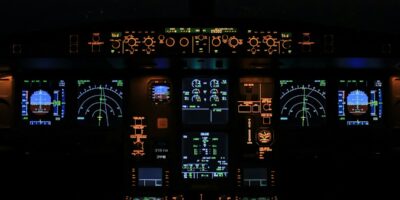Boeing F-15EX Eagle II
The Boeing F-15EX Eagle II represents the latest evolution of a time-tested fighter aircraft. This model boasts numerous advancements, maintaining its legacy while integrating modern technology.
Development and Design
The F-15EX Eagle II is an advanced iteration of the original F-15 Eagle, which first flew in the 1970s. Boeing has refined the design to meet contemporary requirements. The airframe largely remains similar to the earlier models, ensuring a strong, proven structure. However, the F-15EX incorporates updated avionics, radar, and electronic warfare systems.
One of the major changes in the F-15EX is its Open Mission Systems (OMS) architecture. This approach allows for rapid integration of new technology. It supports a plug-and-play system, making it easier to update and customize the aircraft for different missions. Implementing OMS reduces costs and enhances flexibility.
Advanced Avionics and Radar
The radar system in the F-15EX is the AN/APG-82(V)1, a state-of-the-art active electronically scanned array (AESA) radar. It offers greater detection range, improved tracking capabilities, and enhanced reliability. This radar significantly upgrades the situational awareness and targeting accuracy of the aircraft.
The cockpit of the F-15EX includes advanced digital displays, providing clear and comprehensive information to the pilot. These displays allow easier management of the aircraft’s various systems. The new Joint Helmet Mounted Cueing System (JHMCS) accompanies these upgrades, providing pilots with vital data directly within their field of vision.
Enhanced Electronic Warfare
The Eagle Passive/Active Warning and Survivability System (EPAWSS) is another key feature. It affords the F-15EX a broad spectrum of electronic warfare capabilities. EPAWSS enhances the aircraft’s ability to counter modern threats. It detects, identifies, and suppresses enemy radar and missile systems. This system significantly boosts defensive measures and pilot survivability.
Weapons Systems and Payload
The F-15EX can carry a substantial array of weapons. It has a greater payload capacity than its predecessors. The aircraft can manage more than 22,000 pounds of ordnance, distributed across 12 external hardpoints. These hardpoints handle an assortment of missiles and bombs, supporting both air-to-air and air-to-ground missions.
The aircraft can employ modern air-to-air missiles like the AIM-9X Sidewinder and the AIM-120 AMRAAM. For air-to-ground missions, it carries precision-guided munitions such as the Joint Direct Attack Munition (JDAM) and the Small Diameter Bomb (SDB). Additionally, the F-15EX is armed with a 20mm M61 Vulcan cannon, providing a reliable close-in weapon system.
Performance and Capabilities
The F-15EX maintains the high performance of the F-15 series. It achieves speeds over Mach 2.5 and operates at altitudes up to 60,000 feet. Its powerful Pratt & Whitney F100-PW-229 engines deliver the necessary thrust.
The aircraft’s agility and speed make it suitable for both dogfighting and interception missions. Compared to stealth fighters, the F-15EX offers greater armament capacity and endurance. These characteristics make it a versatile platform for various operational roles.
Operational Integration
The F-15EX is designed to integrate smoothly with current and future military systems. Its OMS framework supports interoperability with other platforms, enhancing joint operations. The aircraft can communicate and coordinate effectively within a networked force, underscoring its relevance in modern combat scenarios.
The U.S. Air Force plans to replace older F-15C/D models with the new F-15EX. This transition allows the fleet to maintain a strong air superiority edge while leveraging advanced technologies. The F-15EX fulfills both immediate and long-term strategic goals.
Cost and Procurement
While the F-15EX offers advanced capabilities, it is also designed with cost efficiency in mind. Utilizing an existing airframe reduces development time and costs. The ability to upgrade systems incrementally further contributes to affordability.
The U.S. Air Force contract with Boeing involves an initial batch of aircraft, with plans for additional procurement based on performance and budget considerations. This approach ensures that the F-15EX remains responsive to evolving defense needs while managing expenditure.
International Interest
Nations allied with the United States have shown interest in the F-15EX. Its advanced capabilities make it an attractive option for air forces seeking to enhance their fleets. The aircraft’s compatibility with existing logistics and maintenance structures adds to its appeal.
Future Prospects
The F-15EX is positioned to serve well into the 2040s. Its design allows for future upgrades, ensuring continued relevance. As new technologies emerge, the aircraft can incorporate advancements without extensive redesign, ensuring it remains at the forefront of aerial combat capabilities.
Conclusion
The Boeing F-15EX Eagle II exemplifies a blend of proven design and cutting-edge technology. Its advancements in avionics, radar, and weapons systems mark it as a formidable aircraft. Designed for flexibility and longevity, the F-15EX will play a significant role in future air operations.




Subscribe for Updates
Get the latest articles delivered to your inbox.
We respect your privacy. Unsubscribe anytime.